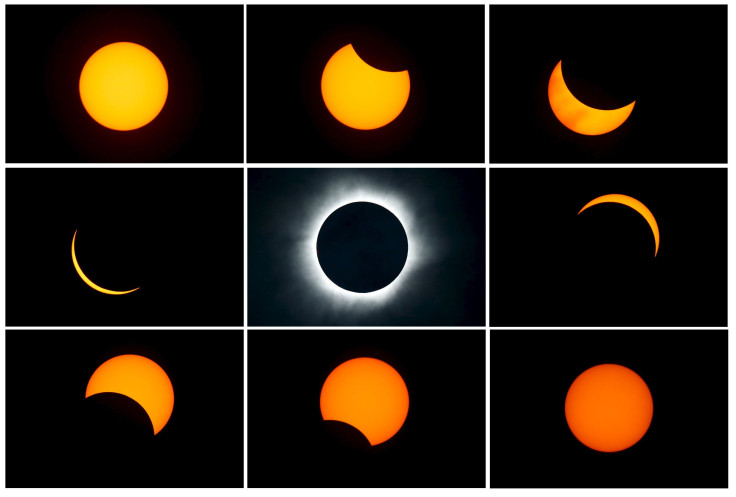7 Tips For How To Photograph The Solar Eclipse

The U.S. will experience a total eclipse on Monday, with the moon blocking out the sun for a period of time starting on the West Coast around 10 a.m. PDT and ending on the East Coast around 3 p.m. EDT. The last time an eclipse was visible in the continental U.S. was 1979, so it’s worth trying to capture this rare event with your camera or iPhone. The “totality” eclipse, where the sun will be entirely covered by the moon, will only happen in about a 70-mile swath across the U.S. Most people will get only a partial eclipse.
Be careful, do not look directly at the sun unless you have purchased the proper sunglasses, it can hurt your eyes and damage your vision forever.
1. Be Quick.
Depending on where you are, you will need to be quick. The eclipse will only last around two minutes, according to CNN Sunday. So if you choose your iPhone or camera, get to know the device's settings before the eclipse happens.
2. iPhone users, lower your expectations or get creative.
While a wonderful thing, an iPhone is not a camera. To get those really beautiful shots of the eclipse you will need a camera with a telephoto zoom lens. Using an iPhone you can either take a selfie or a wide shot, but try to avoid using the camera's digital zoom. It won't work unless you have a zoom lens attachment for your iPhone camera. If you zoom without an attachment, the eclipse will appear grainy and not sharp. Try to focus on other interesting aspects of the event, the people around you or the interesting shadows. NASA created a handy guide for iPhone photographers.
3. If you are zooming, use a tripod.
This goes for people using an iPhone or camera. When you use a zoom for anything, it can amplify the natural shakiness of your hands. Even the slightest movement can cause a blur, or for the image to go out of focus.
4. Get a filter.
You can purchase a special solar filter your camera lens that will darken the scene so that you can capture the sun without overexposing the photograph. Your solar sunglasses can work in a pinch as well. Without a filter, you might completely burn out and destroy your camera.
If you are using a lens for your iPhone, the same rule applies, a filter or your solar sunglasses will make a huge difference.
5. Use manual focus.
Using a camera or iPhone, it’s best to manually focus the shot, because focusing on very bright objects might be difficult for the autofocus. The sun will be far away enough that you should just be able to set your camera lens or phone to infinity focus.
6. Don’t look at the sun.
Seriously, we can't stress this enough.
7. Enjoy it.
It won’t last long and this event is rare. Grab the photos you want and enjoy the event. Millions of Americans will join together to experience the eclipse, take a second to soak it in.
© Copyright IBTimes 2024. All rights reserved.





















